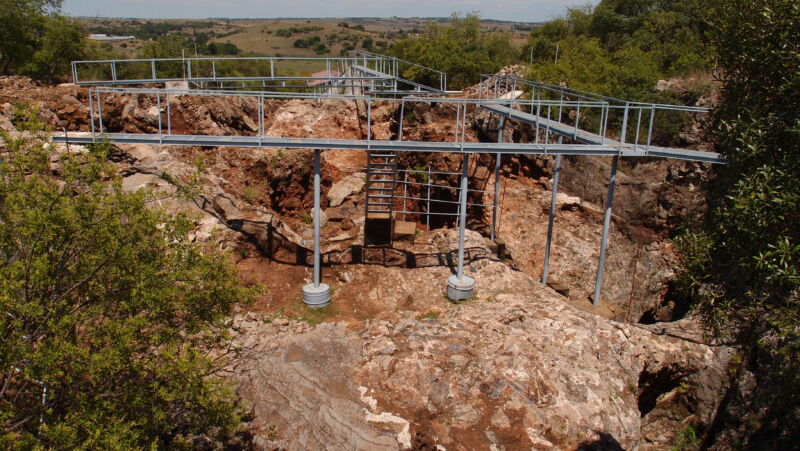Long after some hominins were bipedal, others stuck to the trees

Enlarge / The excavation site where the bones were found. (credit: Georgiou et al. 2020)
We already know that, at various points in our species' past, several hominin species were wandering around Africa. But now it turns out they may have been living very different lives. A team of anthropologists took a closer look at the internal structure of leg bones from two South African hominins. It turns out that around the time our genus emerged, some hominins were living the bipedal life, while others were still spending a lot of time in the trees.
Climbing in the hominin family treeFor most of the last few million years, our ancestors shared their world with several other hominin species. In some ways, most of those species looked and acted like their neighbors, but there were undoubtedly some striking differences, too. Every hominin species in the fossil record has its own unique mix of familiar human traits and more ape-like ones, shaped by their environments and lifestyles.
In some cases, we're not even entirely sure which of those species were our direct ancestors and which were more like cousins. That complexity makes it difficult to figure out exactly when (and why) hominins stopped hanging out in trees and started walking upright.
Read 13 remaining paragraphs | Comments